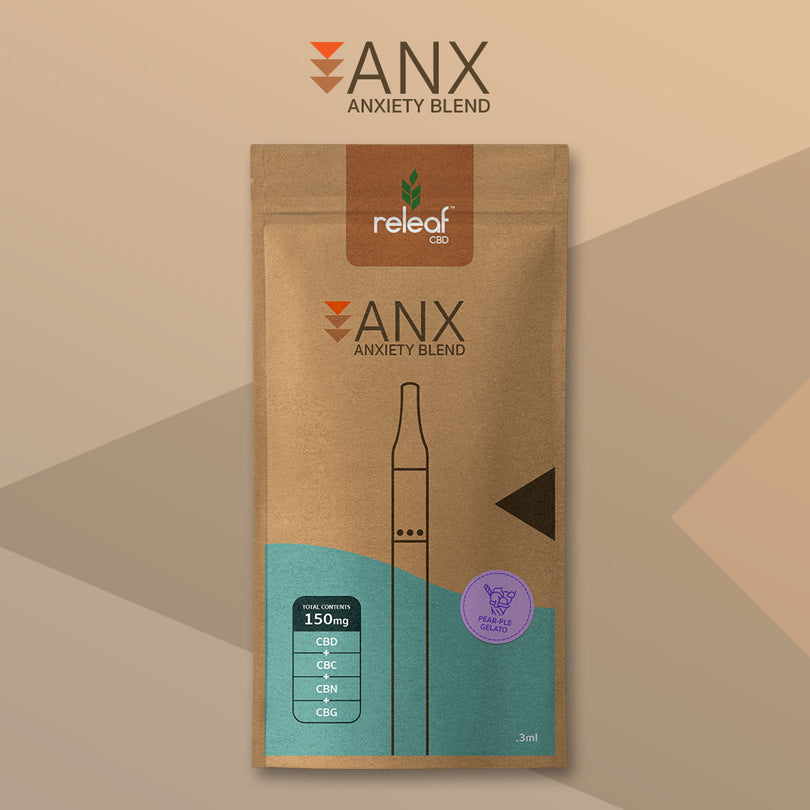While you may have heard of cannabinoids (especially CBD) by now, over the last 5 years there has been an explosion of what are deemed "minor cannabinoids" ( "minors" for short) that have gained popularity and have extremely beneficial properties. This is a look into some of the well known and lesser known cannabinoids.
CBD (Cannabidiol): CBD is one of the most well-known cannabinoids found in the cannabis plant. Unlike THC (tetrahydrocannabinol), CBD is non-intoxicating, which means it doesn't produce a "high" feeling. It is commonly used for its potential therapeutic benefits, such as reducing anxiety, alleviating pain, and promoting relaxation.
CBG (Cannabigerol): CBG is considered a minor cannabinoid because it is usually found in lower concentrations in the cannabis plant. It is a precursor to other cannabinoids like THC and CBD. Some studies suggest that CBG may have potential anti-inflammatory properties. It is known for its neurological effects helping with focus and concentration.
CBC (Cannabichromene): CBC is another non-intoxicating cannabinoid that is though to work in synergy with other cannabinoids. Research indicates that CBC may have anti-inflammatory, analgesic (pain-relieving), and anti-fungal properties. It is known for its calming effect and help dealing with anxiety.
CBN (Cannabinol): CBN is a cannabinoid that is typically formed as THC oxidizes over time. It is mildly psychoactive but much less potent than THC. CBN is often associated with sedative effects and may be used to promote sleep.
Differentiating Delta 9, Delta 8, and Delta 10 THC:
Delta 9 THC (Δ9-THC): Delta 9 THC is the most abundant and well-known psychoactive cannabinoid in cannabis. It is responsible for the euphoric "high" associated with marijuana use. However, it can also cause anxiety and paranoia in some individuals, especially at higher doses.
Delta 8 THC (Δ8-THC): Delta 8 THC is a less common cannabinoid than delta 9 THC. It shares a similar chemical structure but has a different arrangement of atoms, leading to slightly different effects. Delta 8 THC is reported to be less potent in producing the traditional THC-induced high, making it a more moderate option for users seeking a milder experience.
Delta 10 THC (Δ10-THC): Delta 10 THC is even rarer than delta 8 THC and is found in even smaller quantities in the cannabis plant. Similar to delta 8 THC, it is believed to offer a less intense psychoactive experience than delta 9 THC, but more research is needed to understand its effects fully.
The Endocannabinoid System (ECS) and Its Receptors:
The endocannabinoid system (ECS) is a complex network of receptors, enzymes, and endocannabinoids (naturally occurring cannabinoids produced by our bodies). The main components of the ECS are the CB1 and CB2 receptors.
CB1 Receptors: CB1 receptors are primarily located in the brain and central nervous system. They play a crucial role in modulating memory, mood, appetite, pain perception, and motor functions. Delta 9 THC binds strongly to CB1 receptors, leading to its psychoactive effects.
CB2 Receptors: CB2 receptors are mainly found in immune cells and peripheral tissues. They are involved in regulating inflammation, immune responses, and pain perception. CBD, CBG, CBC, and CBN can interact with CB2 receptors to varying degrees, contributing to their potential anti-inflammatory and analgesic properties.
THCV, THCP, and HHC:
THCV (Tetrahydrocannabivarin): THCV is a minor cannabinoid that is structurally similar to THC but causes different effects. Some studies suggest that THCV suppresses appetite, aids in weight loss, boosts energy levels, and improves focus.
THCP (Tetrahydrocannabiphorol): THCP is a newly discovered cannabinoid that appears to have a much higher binding affinity to CB1 receptors than THC. This could potentially make it more potent than delta 9 THC, it can be used for pain relief, anti-seizure, and combatting nausea and other conditions or discomforts.
HHC (Hexahydrocannabinol): HHC is another recently discovered cannabinoid with limited research available. Like THCP, it is believed to have a higher binding affinity to CB1 receptors than THC, but more research is required to fully understand its properties.
Overall, when used responsibly and with awareness, hemp and its cannabinoids can be valuable additions to a holistic approach to health and well-being. Each cannabinoid interacts uniquely with the endocannabinoid system, producing a range of benefits for the human body.




